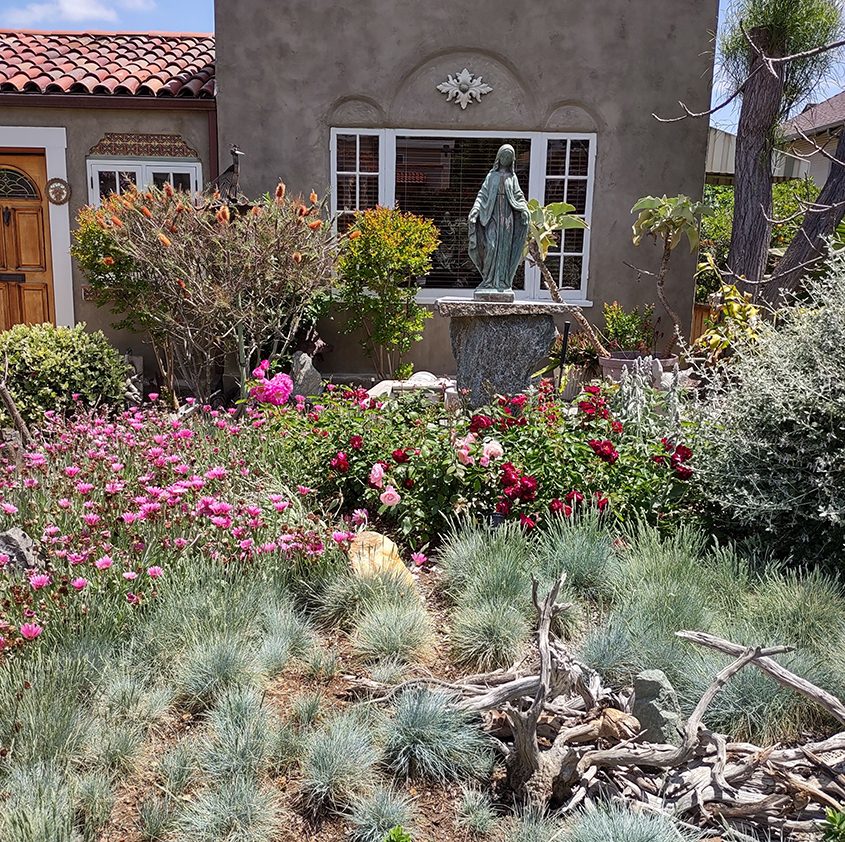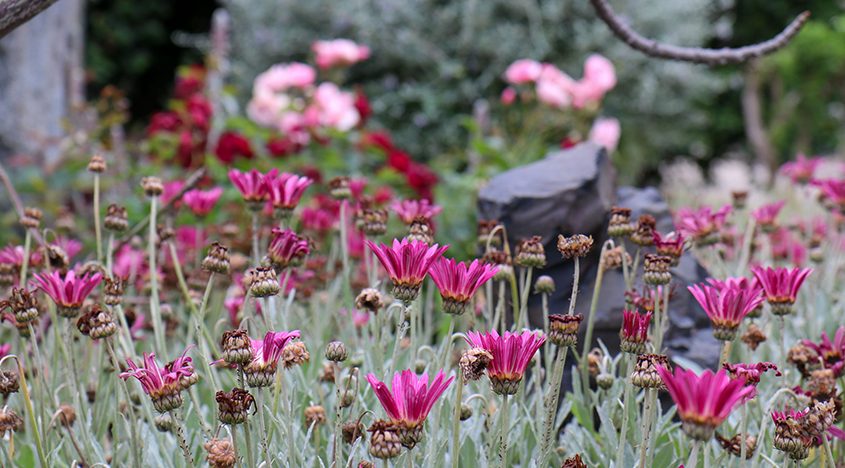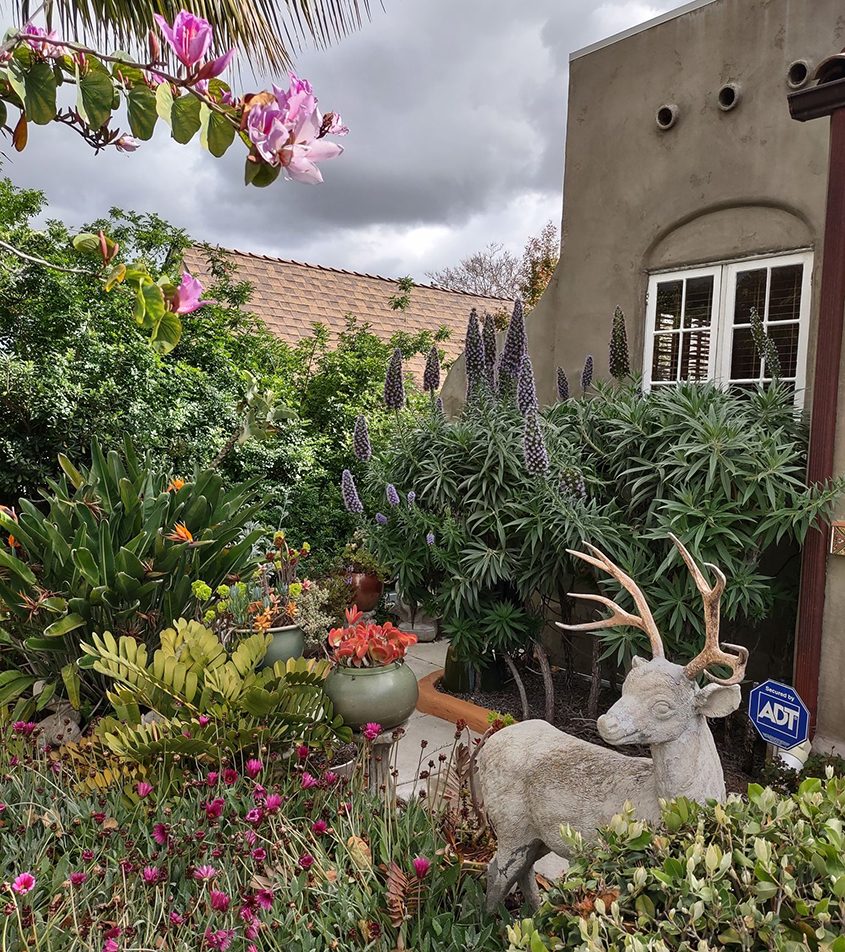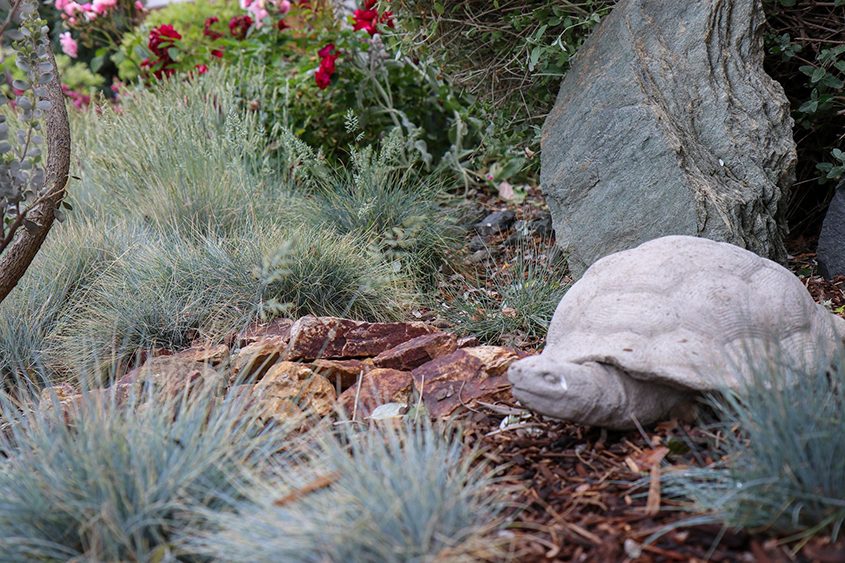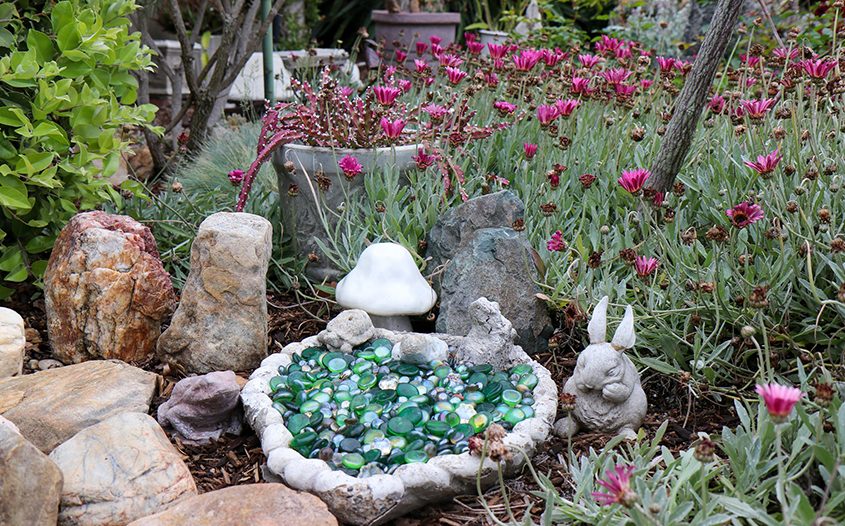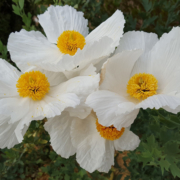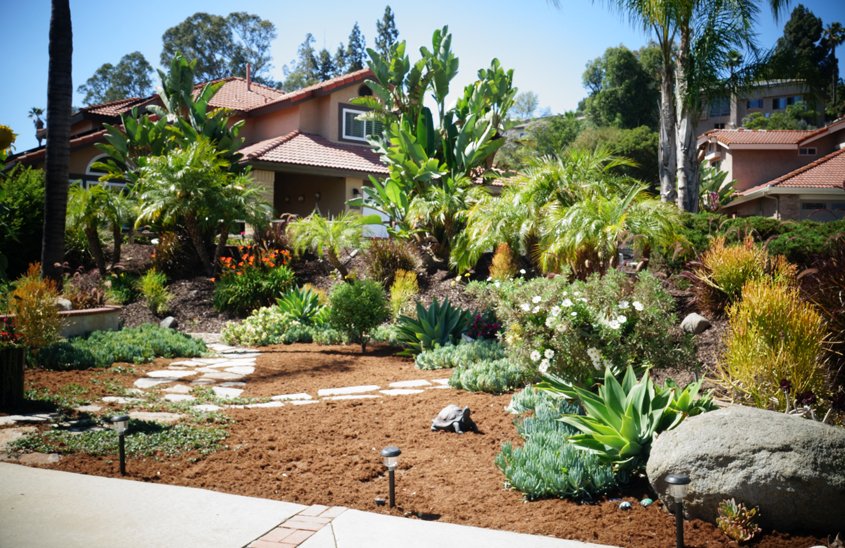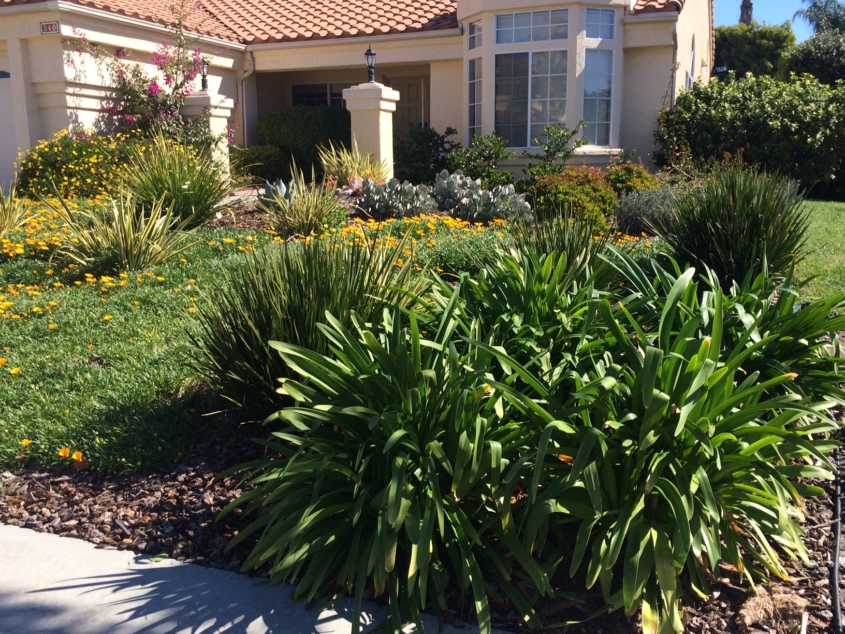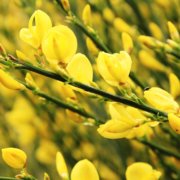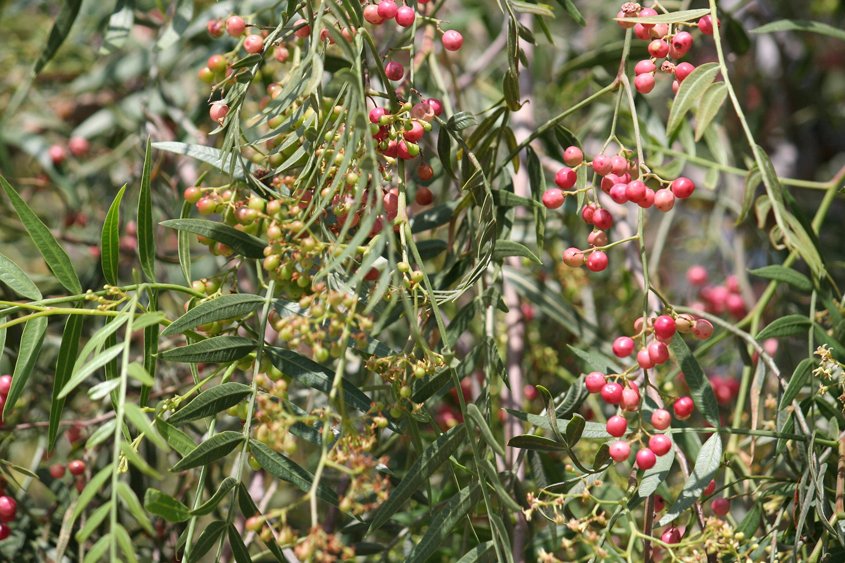Vista Irrigation District Landscape Winner Complements Home Design
Vista Homeowner Diane Krupnak redesigned her front yard to save water and won the 2023 Vista Irrigation District WaterSmart Landscape Contest.
The annual contest recognizes outstanding waterwise residential landscapes based on the criteria of overall attractiveness, appropriate plant selection, design, appropriate maintenance, and efficient irrigation methods.
Workshops provide homeowner know-how
Concerned by the severity of the last drought, Krupnak removed the water-thirsty grass from her front yard to reduce water use. She began her project by enrolling in the free WaterSmart Landscape Makeover series of workshops for homeowners offered by the San Diego County Water Authority and its member agencies.
The workshops gave Krupnak the knowledge to move forward with her makeover, including soil assessment, creating a landscape plot plan, and drip irrigation basics, and mulching.
Colorful plant palette replaces grass
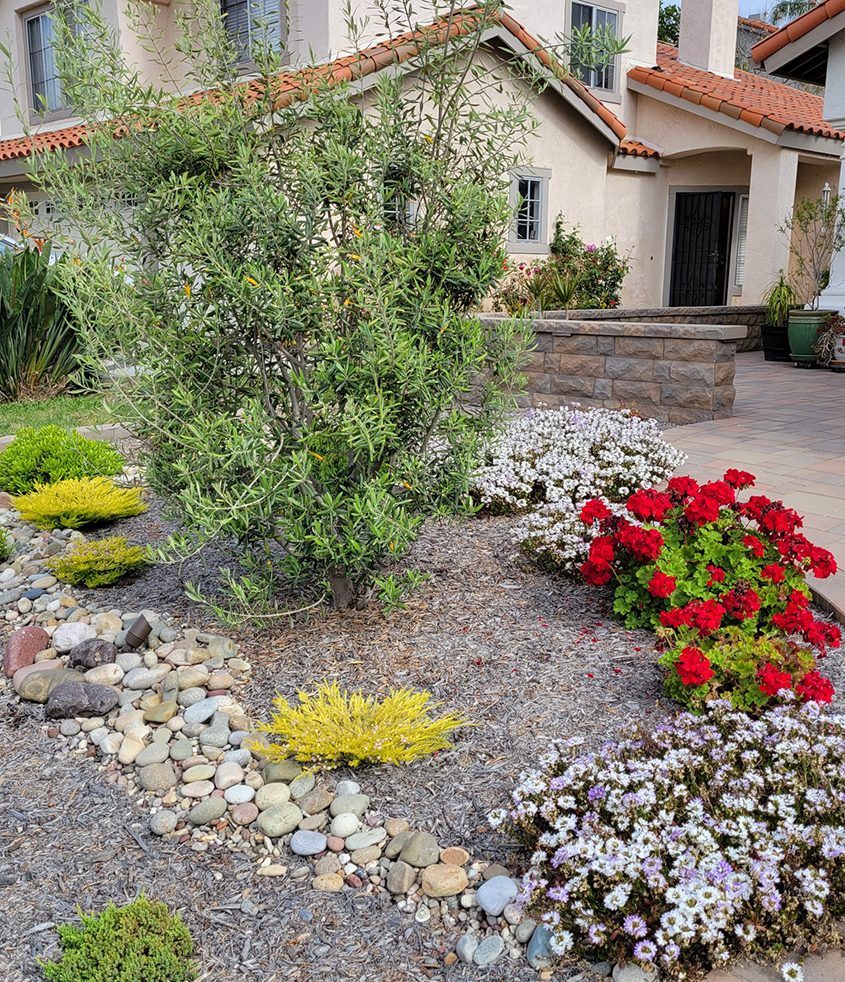
Diane Krupnake wanted a landscape that would complement the Mediterranean aesthetic of her home. Photo: Vista Irrigation District
Krupnak started by researching the plants she wanted to add to her yard. She focused on the plants’ characteristics and water needs to make sure they would be compatible in her landscape.
She also wanted a landscape to complement the Mediterranean aesthetic of her home. Krupnak selected a base color palate in greens and whites highlighted with pops of color. Once the plan came together, she hired landscape professionals to install the new landscape and hardscape.
The green hues in her landscape design come from shaggy Cousin Itt Acacias, Wheeler’s Dwarf Pittosporum, dwarf daylilies, and Italian Oregano. Each plant provides contrasting textures and structure creating visual interest. A fruitless Olea Swan Hill olive tree stands as the focal point of her yard.
White tones include flowering Scaevola White plants adjacent to Krupnak’s new permeable walkways accentuating the earth tones of the pavers.
The base colors in the winning landscape design are accented with bright reds from plants like Caliente Deep Red Geraniums and Tecoma Stans Bells of Fire Esperanza, as well as yellow foliage from Sunset Gold Coleonema pulchellum.
Beautiful results reduce water use, saving money and time
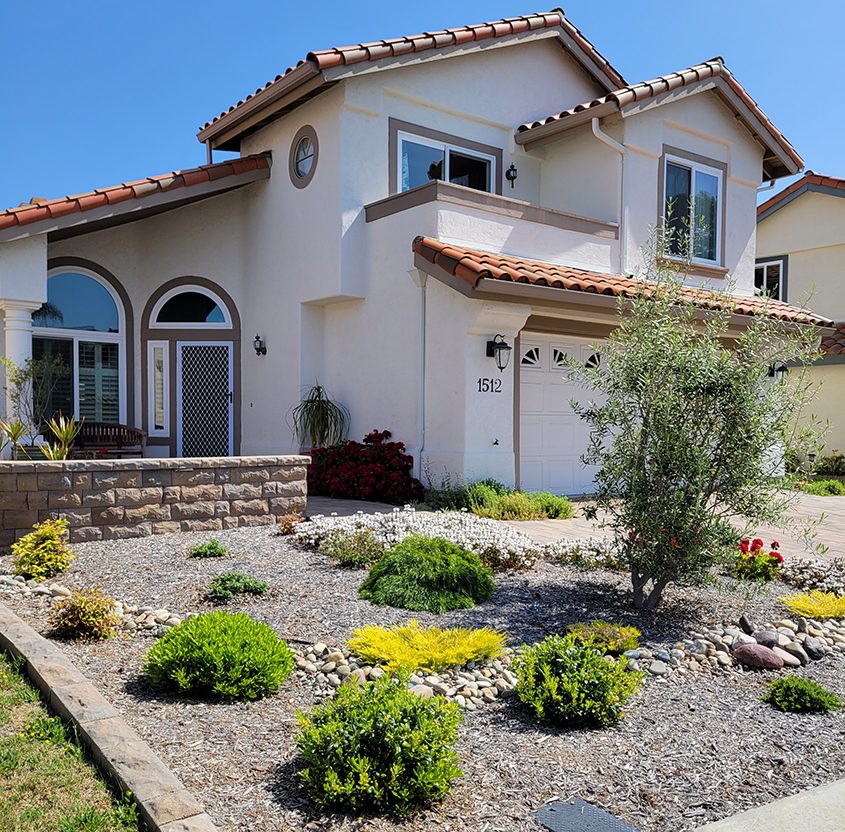
The landscape makeover replaced grass with new low-water-use plants and a patio area. Photo: Vista Irrigation District
“I chose a landscape of moderate to low water use plants that complement the Mediterranean influence of my home,” said Krupnak. “I save money on my water bills and no longer pay to have my yard mowed.”
The hardscape included in Krupnak’s design plan provides functional living space. The patio replaces a flat lawn area near the home’s entranceway and transforms it into an inviting place to sit and admire the rest of her new landscape.
Free WaterSmart landscape workshops – online or in-person
“Free regional WaterSmart landscape workshops are available online and in person to assist homeowners in upgrading their home’s landscape to reduce water bills,” said Brent Reyes, VID management analyst. “Additionally, turf removal rebates can help with the cost.”
Participating San Diego County Water Authority member agencies include the Vista Irrigation District, Helix Water District, Olivenhain Municipal Water District, Otay Water District, Padre Dam Municipal Water District, San Dieguito Water District, Sweetwater Authority, Vallecitos Water District, Rincon Del Diablo Water District, and the cities of Escondido and Oceanside. Customers of California American Water also can access the workshops.
For more information about the contest and to see more examples of waterwise landscaping, visit www.landscapecontest.com. Visit the district’s website to learn more about free landscape workshops and incentive programs.
Vista Irrigation District is a public agency governed by an elected five-member board. The district provides water service to roughly 134,000 people in the city of Vista and portions of San Marcos, Escondido, Oceanside, and unincorporated areas of San Diego County.
(Editor’s note: The Vista Irrigation District is one of the San Diego County Water Authority’s 24 member agencies that deliver water across the San Diego County region.)



